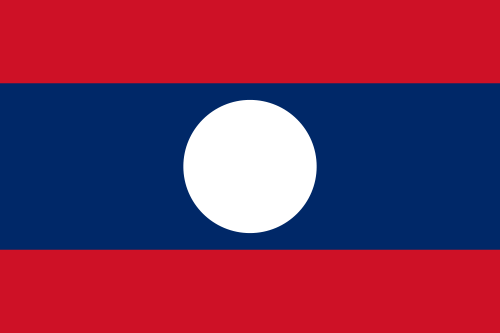Laos, a landlocked country in Southeast Asia, is known for its mountainous terrain, French colonial architecture, hill tribe settlements, and Buddhist monasteries. Vientiane, the capital, is the site of the That Luang monument, where a reliquary reportedly houses the Buddha’s breastbone. The country’s laid-back atmosphere, combined with natural wonders like the Mekong River and the UNESCO-listed town of Luang Prabang, makes Laos a serene and culturally rich destination, steeped in Theravada Buddhist traditions.
List of National and Public Holidays in Laos for the year 2025
- New Year’s Day is on Wednesday, 1st January 2025.
- International Women’s Day is on Saturday, 8th March 2025.
- Lao New Year is from Sunday, 13th April 2025 to Wednesday, 16th April 2025.
- Labour Day is on Thursday, 1st May 2025.
- Visakhabousa Day is on Sunday, 11th May 2025.
- Children’s Day is on Sunday, 1st June 2025.
- Lao Women’s Union Day is on Sunday, 20th July 2025.
- Boun Khao Phansa is on Thursday, 24th July 2025.
- Boat Racing Festival is on Wednesday, 8th October 2025. *
- That Luang Festival is on Wednesday, 5th November 2025.
- National Day is on Tuesday, 2nd December 2025.
*Please note that the date for the Boat Racing Festival may vary slightly based on the lunar calendar.
List of National and Public Holidays in Laos for the year 2024
- New Year’s Day: Monday, 1 January 2024
- International Women’s Day: Friday, 8 March 2024
- Lao New Year: Saturday, 13 April 2024, to Tuesday, 16 April 2024
- Labour Day: Wednesday, 1 May 2024
- Visakhabousa Day: Wednesday, 22 May 2024
- Children’s Day: Saturday, 1 June 2024
- Boun Khao Phansa: Saturday, 20 July 2024
- Lao Women’s Union Day: Saturday, 20 July 2024
- Boun Ok Phansa: Thursday, 17 October 2024
- Boat Racing Festival: Monday, 28 October 2024
- That Luang Festival: Friday, 1 November 2024
- National Day: Monday, 2 December 2024

Laos: A Serene Mosaic of Culture, Nature, and Tradition
Introduction
Laos, officially known as the Lao People’s Democratic Republic, is a landlocked nation in Southeast Asia. Known for its mountainous terrain, Buddhist monasteries, and colonial architecture, Laos is a haven of tranquility and traditional lifestyles.
Historical Background
Laos’ history is rich and diverse, shaped by its position as a crossroads of Southeast Asia. Influenced by various kingdoms and empires, including the Lan Xang kingdom and later French colonialism, Laos gained independence in 1953. The country’s past is a blend of resistance, resilience, and cultural preservation.
Geographical Splendor
The geography of Laos is predominantly mountainous, with the Mekong River forming a natural border with Thailand. The landscape is characterized by dense forests, steep terrain, and striking river valleys. This topography has significantly influenced Laotian lifestyles and culture.
Cultural Tapestry
Lao culture is deeply rooted in Theravada Buddhism, which influences everything from art to daily routines. Traditional music, dance, and crafts like silk weaving and silverwork are vital cultural expressions. Lao cuisine, known for its use of fresh herbs and distinct flavors, is a highlight for visitors.
Socio-Economic Dynamics
Laos remains one of the less developed countries in Southeast Asia. Its economy is largely based on agriculture, hydroelectric power, and increasingly, tourism. Challenges include rural poverty, infrastructure development, and integration into the global economy.
Political Structure
Laos is a one-party socialist republic, governed by the Lao People’s Revolutionary Party. Since opening up its economy in the 1990s, the country has seen gradual reforms, but political and media freedoms remain limited.
Religious and Ethnic Diversity
The Laotian population is a mosaic of ethnic groups, each with unique traditions and languages. Buddhism plays a central role in society, evident in the numerous temples and the practice of almsgiving.
Environmental Richness and Challenges
Laos’ environment is one of its greatest assets, with extensive biodiversity and natural resources. However, the country faces environmental challenges, including deforestation, wildlife conservation, and the impacts of dam projects on the Mekong River.
Tourism Appeal
Tourism in Laos is growing, known for its laid-back lifestyle, natural beauty, and cultural sites. Key attractions include Luang Prabang, Vientiane, the Plain of Jars, and the Bolaven Plateau. The government is focusing on sustainable and ecotourism initiatives.
Arts and Literature
Laotian art and literature are heavily influenced by Buddhist and folk themes. Traditional stories, often passed down orally, are an essential part of Laotian heritage. The country’s art scene includes handicrafts, textiles, and distinctive murals in Buddhist temples.
Global Interactions
Laos maintains diplomatic relationships globally and in the region. It is a member of ASEAN and participates in various international organizations, focusing on economic development and regional cooperation.
Challenges and Future Outlook
Laos faces the dual challenge of preserving its cultural and natural heritage while pursuing economic growth. The country’s future involves balancing development with sustainability and safeguarding its unique cultural identity.
Conclusion
Laos stands as a testament to the enduring allure of a simpler, more connected way of life. Its commitment to preserving its cultural traditions, natural beauty, and serene atmosphere makes it a unique and captivating destination in Southeast Asia.
